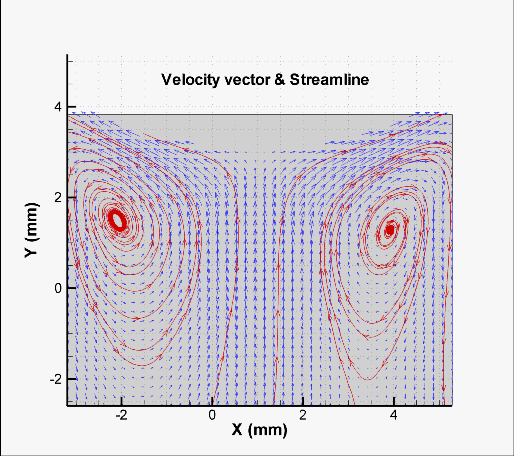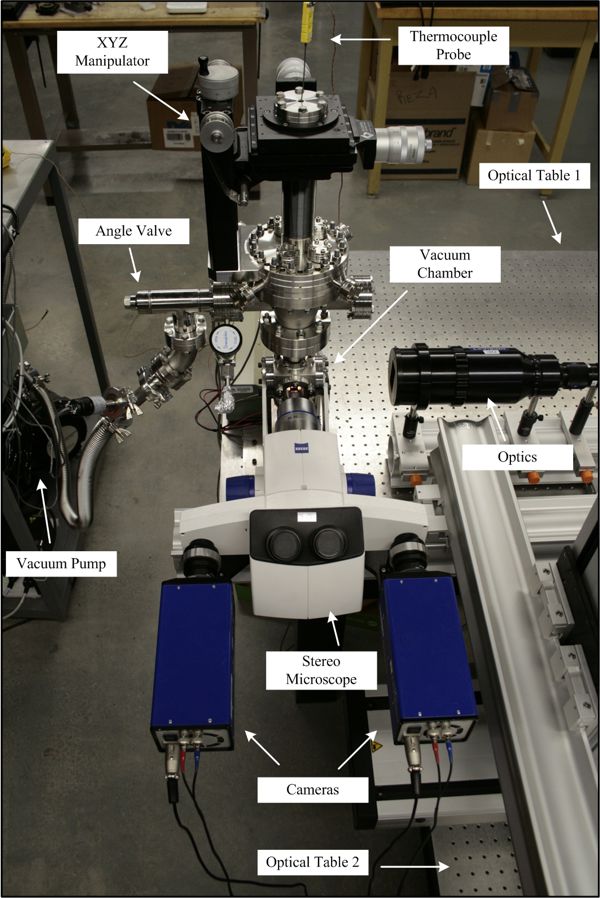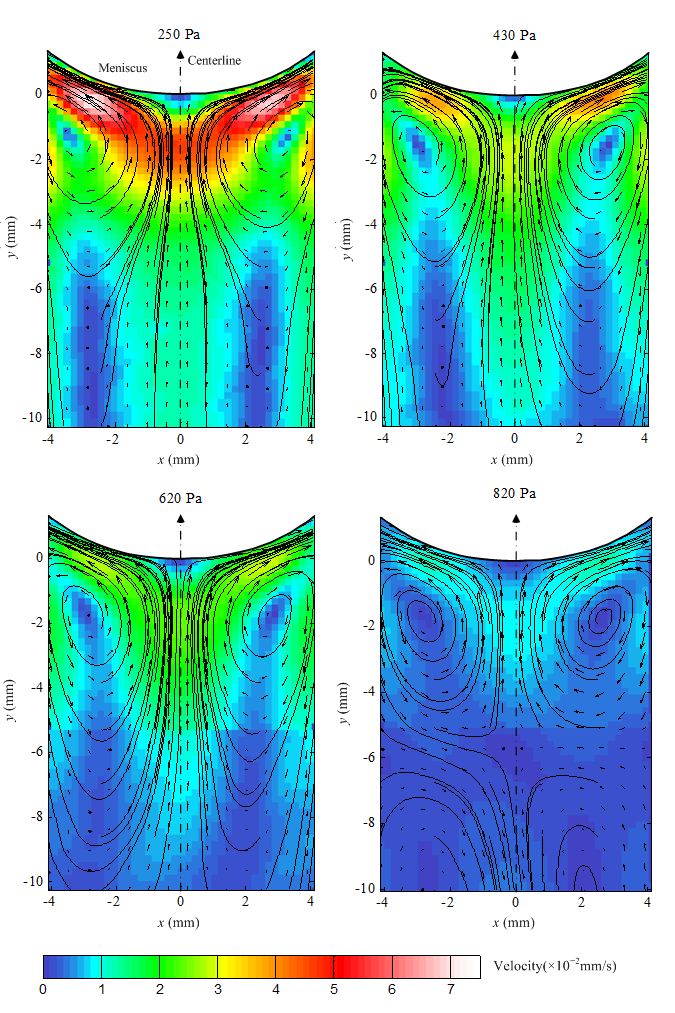PDFs & Technicians Graduates Undergraduates Past Students
Xudong (Terry) Song

MSc. : University of Alberta: (2010)
Supervisors
Dr. David S. Nobes
Experimental Investigation on Evaporation Induced Convection in Water Using Laser Based Measurement Techniques
This study was devoted to visualization and characterization of the evaporation-induced convection in water in the absence of buoyancy-driven motion. To achieve this, both the temperature and velocity field were measured using planar laser induced fluorescence (PLIF) and stereo particle image velocimetry (Stereo-PIV).

Motion in an evaporating cuvette of water

A annotated photo of the setup

The effect of evaporation rate (vaccum pressure) on the gerenated velocity field
Experiment Set-up
The designed experimental setup enabled water to evaporate at various high evaporation rates in the absence of buoyancy-driven motion.
An experimental setup mainly consisting of a vacuum chamber system and an imaging system shown schematically in Figure 1 and Figure 3 was designed to carry out the study. A quartz cuvette (9F- Q- 10, Starna Cells) was chosen as the container to hold the water sample. All walls and the base of the cuvette are optically polished in production and therefore remain extremely flat, allowing the cuvette to be suitable for laser and imaging techniques. This cuvette has a V-shape inlet and then a constant rectangular cross-section, with internal dimensions of 4mm×10mm over the majority of its 45mm height.
The evaporation process of the liquid water took place in a pressure controlled vacuum chamber (CU6-0275, Kurt J. Lesker). As shown in Figure 4 & 5, the vacuum chamber was connected to a vacuum pump and a pressure transducer (PX419-005A5V, Omega) was installed between the angle valve and the vacuum chamber in order to monitor the vacuum chamber pressure.
Results
This study was devoted to visualization and characterization of the evaporation-induced convection in water in the absence of buoyancy-driven motion. To achieve this, both the temperature and velocity field were measured using planar laser induced fluorescence (PLIF) and stereo particle image velocimetry (Stereo-PIV).
Temperature field
In order to eliminate buoyancy-driven motion, the thermoelectric cooler (TEC) was maintained at 4°C. The obtained temperature profiles indicate that the water was density stabilized during evaporation. This means that there was no buoyancy-driven motion during the investigation.
Velocity field
The observed evaporative convection of water was symmetric with the centerline of the cuvette. Convection patterns at different pressures were similar while its strength decreased as the pressure increased.
Conclusion
The temperature distribution of the observed convection indicates that there was no buoyancy-driven motion in the bulk water during the investigation. The velocity fields demonstrated that the strength of the convection increased as the pressure was reduced. Ma was linearly proportional to the average evaporation rate of the water. In conclusion, the observed evaporative convection of water was most likely driven by evaporation-induced surface tension gradients along the water surface.